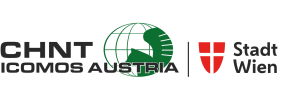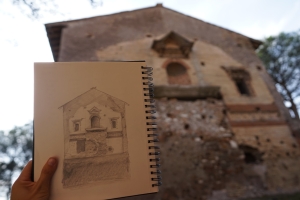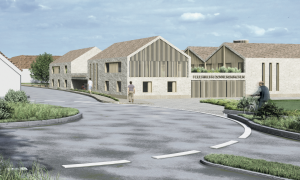Research Unit of Building History and Building Archaeology | TU Wien
We would like to use this blog to introduce the Research Unit of Building History and Building Archaeology (TU Wien), which provides us with significant support for the CHNT. For the last two years, students have helped on site at the conference and created great short films about the CHNT.
The department encompasses various areas of architectural history from antiquity to the present day, focusing on both European and non-European contexts. This diversity is reflected not only in our broad range of teaching but also in a multitude of research projects and collaborations with international scientific institutions. Within these research projects, we foster an active approach to “research in teaching” by providing students with opportunities to participate. Through their involvement, students gain insights into the entire scientific process, from complex literature research and fieldwork to data analysis and publication.
CULTURE OF AUSTRIAN ARCHITECTURE
Documentation – Evaluation – Dissemination
Located in the heart of the UNESCO World Heritage Site “Historic Center of Vienna,” the research area of „History of Architecture and Building Archeology“ focuses on various epochs of Austrian architectural history. Examining the influences of the former Austro-Hungarian Empire, which extended far beyond Austria’s current political boundaries, our research encompasses medieval churches, defensive structures, rural housing, wine architecture, and 21st century student housing. With changing thematic focuses, we scientifically document and investigate these aspects as subfields of Austrian architectural culture. Our work contributes to the preservation and care of Austria’s architectural and cultural landscape by valorizing and disseminating its architectural heritage.
BUILDING TECHNOLOGY HISTORY
Materials – Construction – Logistics
This research area explores not only construction techniques and materials but also the architectural and organizational aspects of building processes such as building typologies, design principles, functional relationships, construction workflows, and construction site logistics. Only by combining these perspectives, we gain comprehensive insights into the interconnectedness and mechanisms of the built environment. Through the synthesis of building documentation, literature, technical understanding, and experimental investigations, we aim to reconstruct the genesis of historical buildings along a practical and hands-on path.
CULTURAL SPACES
Architecture – Identity – Development
Our research approach emphasizes diverse perspectives that go beyond a purely historical and chronological overview. We explore technological and sociocultural aspects and their influence on architectural developments over time. Through field trips and direct engagement with various architectural cultures, we bridge the gap between theoretical discourse and practical experiences. Our focus extends beyond architecture as cultural heritage, viewing it as an expression of political tendencies and a bearer of identity. We investigate the transformation of cultural landscapes, considering both representative buildings and vernacular architecture. Adequatly responding to the consequences for architecture and (settlement) landscapes is a central research theme.
BUILDING DOCUMENTATION
Analysis – Processes – Integration
Comprehensive documentation and on-site analysis form the basis of any work in the historical context. We employ various methods of building documentation, ranging from manual measurements to state-of-the-art technology. Continual refinement of our procedures based on first-hand experience is a key objective. The goal is to integrate individual tools into a comprehensive documentation framework, which serves as a foundation for further scientific research and enables solution-oriented and preservation-compatible work in the fields of heritage conservation and building renovation. Integrating building documentaton into our teaching provides students with direct access to objects and allows for immediate engagement with historical structures.
Project „Enza”, experimental earthen installation
by Cosma Kremser and Lea Fröhlinger at AzW Vienna, 2023
Research trip with students from Indonesia to the
world heritage site Wachau, 2023
Installations made of clay, wood and bamboo
Student project for Yasmeen Lari retrospective at AzW Vienna, 2023
A student´s architectural drawing of the cenotaph „Annia Regilla”
during a research trip to Rome, 2022
Design for a fire station in Donnerskirchen
(world heritage site)
Project by Valentin Schmid, 2023
Digital models of Karlskirche Vienna
Project by Lukas Stampfer, 2022









